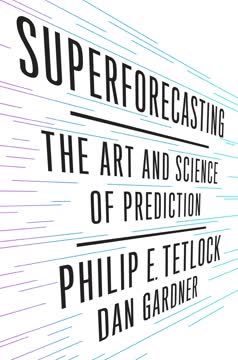Key Takeaways
1. Complex Adaptive Systems: Understanding the Unpredictable
Complexity itself allows for techniques that promote effective adaptation.
Embracing uncertainty. Complex Adaptive Systems (CAS) are characterized by multiple interacting agents, emergent properties, and difficulty in prediction. These systems are found in various domains, including biology, economics, and social organizations. Understanding CAS requires a shift from traditional linear thinking to a more holistic approach that acknowledges the interconnectedness of system components.
Key characteristics:
- Multiple interacting agents
- Nonlinear relationships
- Emergent properties
- Adaptive behavior
- Difficulty in prediction
By recognizing these characteristics, managers and policymakers can develop strategies that work with, rather than against, the inherent complexity of their systems.
2. Harnessing Complexity: A Framework for Action
The thesis of this book is that complexity can be harnessed.
A new approach. Rather than trying to eliminate or control complexity, the authors propose a framework for harnessing it. This approach focuses on three key processes: variation, interaction, and selection. By understanding and influencing these processes, decision-makers can guide complex systems towards desired outcomes without requiring complete control or prediction.
Framework components:
- Variation: Creating and maintaining diversity
- Interaction: Shaping patterns of connection
- Selection: Amplifying successful strategies
This framework provides a systematic way to analyze complex situations and suggest promising possibilities for action, even in the face of uncertainty.
3. Variation: The Raw Material of Adaptation
Variation provides the raw material for adaptation.
Fostering diversity. In complex systems, variety is crucial for adaptation and innovation. However, there must be a balance between variety and uniformity. Too much variety can lead to chaos, while too little can result in stagnation. Managers and policymakers should consider mechanisms that create, maintain, and destroy variety in their systems.
Sources of variation:
- Copying with error (mutation)
- Recombination of existing elements
- Introducing new agents or strategies
By consciously managing these sources of variation, organizations can improve their adaptive capacity and resilience in the face of changing environments.
4. Interaction: Shaping Patterns and Outcomes
Interaction is essential to our framework because the events of interest within a system arise from the interactions of its agents with each other and with artifacts.
Patterns of connection. The way agents interact in a complex system profoundly affects its behavior and outcomes. Interaction patterns are shaped by factors such as proximity, activation, and the structure of physical and conceptual spaces. By understanding and influencing these patterns, managers can guide system behavior without direct control.
Key concepts:
- Proximity: Factors that make agents likely to interact
- Activation: Processes that affect the timing of agent activity
- Spaces: Physical and conceptual environments that structure interactions
Manipulating these factors can lead to emergent properties and self-organizing behaviors that benefit the system as a whole.
5. Selection: Amplifying Success and Culling Failure
Selection processes drive the amplification of success and the elimination of failure in Complex Adaptive Systems.
Shaping evolution. Selection mechanisms determine which agents or strategies are copied, modified, or eliminated. This process is central to adaptation and improvement in complex systems. Effective selection requires clear criteria for success, appropriate attribution of credit, and mechanisms for creating new agents or strategies.
Components of selection:
- Defining criteria for success
- Determining the level of selection (agents vs. strategies)
- Attributing credit for success and failure
- Creating new agents or strategies
By carefully designing and managing these components, organizations can enhance their ability to learn and adapt in complex environments.
6. Exploration vs. Exploitation: Balancing Innovation and Efficiency
The idea is to use our knowledge of complexity to do better.
Strategic trade-offs. A fundamental challenge in complex systems is balancing exploration (seeking new possibilities) with exploitation (utilizing known strategies). This trade-off is present in various contexts, from biological evolution to organizational strategy. Finding the right balance is crucial for long-term success and adaptation.
Factors favoring exploration:
- Long-term or widespread problems
- Fast, reliable feedback
- Low risk of catastrophe from exploration
- Looming disasters in the status quo
Managers must consider these factors when deciding how much to invest in exploring new strategies versus exploiting existing ones.
7. Attribution of Credit: Learning from Success and Failure
When adaptive agents live in a rapidly changing environment, they tend to look to other agents to see which performance measures tend to work and which ones tend to fail.
Effective learning. In complex systems, it's often difficult to accurately attribute credit for success or blame for failure. However, developing effective methods for credit attribution is crucial for learning and improvement. Organizations can enhance their ability to learn by using fine-grained measures of success and developing strategies to handle inevitable attribution errors.
Approaches to credit attribution:
- Using fine-grained and short-term measures of success
- Learning from surprises (outcomes better or worse than expected)
- Developing surrogate experiences through simulation
By improving credit attribution, organizations can accelerate their learning and adaptation in complex environments.
8. Leadership in Complex Systems: Setting Examples and Standards
What a leader does is especially likely to be copied by others.
Influencing through visibility. Leaders play a crucial role in shaping complex systems by setting examples that others are likely to emulate. This influence stems from their ability to set standards, demonstrate success, and establish beneficial norms. Effective leaders in complex systems understand and leverage this visibility to guide their organizations.
Ways leaders influence:
- Setting standards that provide incentives for others
- Demonstrating successful strategies or performance measures
- Establishing beneficial norms in a community
By consciously exercising visible leadership, managers can shape the behavior and values of their organizations in ways that promote adaptation and success in complex environments.
Last updated:
FAQ
What is "Harnessing Complexity" by Robert Axelrod and Michael D. Cohen about?
- Exploring Complex Adaptive Systems: The book examines how organizations and social systems function as Complex Adaptive Systems (CAS), where many agents interact, adapt, and evolve in unpredictable ways.
- Framework for Action: It provides a practical framework for managers and policymakers to harness, rather than eliminate, complexity for productive ends.
- Interdisciplinary Approach: Drawing from evolutionary biology, computer science, and social design, the authors synthesize insights to address real-world organizational and policy challenges.
- Focus on Variation, Interaction, Selection: The book is structured around three central processes—variation, interaction, and selection—that drive adaptation and change in complex systems.
Why should I read "Harnessing Complexity" by Axelrod and Cohen?
- Practical Guidance for Uncertainty: The book offers actionable strategies for thriving in environments where prediction and control are difficult due to complexity.
- Bridges Theory and Practice: It moves beyond metaphor, providing explicit methods and questions to apply complexity science to organizational and policy design.
- Relevant Across Fields: Whether you’re in business, government, or social policy, the concepts are applicable to a wide range of complex, adaptive challenges.
- Timely Insights: With the rise of the Information Revolution and rapid technological change, understanding how to harness complexity is more relevant than ever.
What are the key takeaways from "Harnessing Complexity" by Axelrod and Cohen?
- Complexity as an Asset: Complexity is not just a liability to be controlled; it can be harnessed for innovation, adaptation, and improvement.
- Population Approach: Viewing systems as populations of diverse agents and strategies helps identify leverage points for change.
- Balance Exploration and Exploitation: Effective adaptation requires balancing the creation of new possibilities (exploration) with the refinement of existing ones (exploitation).
- Interventions Matter: Deliberate changes to variation, interaction patterns, and selection criteria can channel complexity toward desirable outcomes.
How do Axelrod and Cohen define a Complex Adaptive System in "Harnessing Complexity"?
- Populations of Agents: A CAS consists of multiple agents (individuals, organizations, or even software) that interact with each other and their environment.
- Adaptive Strategies: Agents use and modify strategies based on experience, imitation, and trial-and-error learning.
- Emergent Properties: System-level behaviors and structures emerge from local interactions, often in ways that are hard to predict from the parts alone.
- Continuous Coevolution: As agents adapt, they change the context for others, leading to ongoing, dynamic coevolution within the system.
What is the main framework or method proposed in "Harnessing Complexity" by Axelrod and Cohen?
- Three Key Processes: The framework centers on variation (generating diversity), interaction (patterns of agent contact), and selection (amplifying success).
- Population Perspective: It emphasizes analyzing populations of agents and strategies, not just individual actors or static structures.
- Guiding Questions: The authors provide a set of questions to systematically analyze and intervene in complex systems, focusing on leverage points.
- Active, Not Predictive: The method is about guiding action and adaptation, not making detailed predictions or seeking total control.
How does "Harnessing Complexity" by Axelrod and Cohen distinguish between complexity and chaos?
- Complexity Involves Structure: Complexity refers to systems with many interacting agents, where structure and adaptation are possible, even if prediction is hard.
- Chaos Is Disorderly: Chaos deals with highly sensitive, turbulent systems (like weather) that quickly become disordered and unmanageable.
- Potential for Improvement: Complex systems, unlike chaotic ones, often allow for thoughtful intervention and improvement through understanding interaction patterns.
- Emergence vs. Randomness: Complexity is about emergent properties from structured interactions, not just randomness or lack of order.
What are the roles of variation, interaction, and selection in "Harnessing Complexity" by Axelrod and Cohen?
- Variation: Provides the raw material for adaptation; diversity among agents and strategies is essential for innovation and resilience.
- Interaction: Determines who or what interacts with whom, shaping the flow of information, resources, and influence within the system.
- Selection: Amplifies successful agents or strategies and culls less effective ones, driving adaptation and change over time.
- Interdependence: These processes are interlocking; changes in one affect the others, creating dynamic feedback loops.
How does "Harnessing Complexity" by Axelrod and Cohen advise balancing exploration and exploitation?
- Trade-off Principle: Too much exploration (novelty) leads to disorder and missed opportunities to capitalize on what works; too much exploitation (uniformity) risks stagnation and vulnerability.
- Context Matters: The right balance depends on factors like feedback speed, risk of catastrophe, and the potential for widespread application of improvements.
- Encourage Variety When Needed: Exploration is especially valuable for long-term, widespread, or high-risk problems, or when disaster looms.
- Mechanisms for Balance: Use organizational routines, feedback systems, and structural interventions to maintain an adaptive balance.
What practical examples does "Harnessing Complexity" by Axelrod and Cohen use to illustrate its concepts?
- Grameen Banking: Harnesses village social networks to provide microcredit, leveraging existing complexity for economic development.
- Linux Open Source Development: Shows how massive variety and decentralized contributions can be managed for high-quality outcomes.
- Social Capital in Italy: Demonstrates how patterns of interaction and trust networks foster economic and governmental success.
- AIDS Research: Highlights the importance of nonrandom interaction patterns in understanding and intervening in disease spread.
How does "Harnessing Complexity" by Axelrod and Cohen address the Information Revolution?
- Accelerates Complexity: Information technology reduces barriers to interaction, increasing the complexity and interdependence of social and technical systems.
- Enables Rapid Adaptation: Advances in information processing, storage, and communication allow for faster feedback and adaptation.
- Creates New Challenges: While offering opportunities for improvement, the Information Revolution also introduces risks like systemic failures and loss of diversity.
- Framework Relevance: The book’s framework is especially suited to analyzing and intervening in the fast-changing, interconnected world shaped by information technology.
What are the main questions to ask when applying the "Harnessing Complexity" framework by Axelrod and Cohen?
- Identify Agents and Strategies: Who are the agents, and what strategies and artifacts do they use?
- Analyze Populations and Types: What populations exist, and how are types (categories) defined and maintained?
- Examine Variation and Interaction: How is variety created and destroyed? What are the patterns of interaction, and how can they be changed?
- Assess Selection and Success Criteria: What criteria are used for selection? Is selection acting on agents, strategies, or both, and how can it be harnessed for adaptation?
What are the best quotes from "Harnessing Complexity" by Axelrod and Cohen, and what do they mean?
- “Throw with your opponent’s own weight.” – This judo metaphor encapsulates the book’s philosophy: use the inherent dynamics of complexity to your advantage, rather than fighting against them.
- “Complexity can be harnessed.” – The central thesis: complexity is not just a problem to be solved, but a resource to be used for innovation and improvement.
- “In a world of mutually adaptive players, even though prediction may be difficult, there is quite a bit that you can do.” – Emphasizes that action and adaptation are possible even when the future is uncertain.
- “The purpose of this book is to help managers and policy makers harness complexity.” – Clarifies the book’s practical intent: to provide tools and frameworks for real-world decision-makers.
Review Summary
Harnessing Complexity receives mixed reviews, with an average rating of 3.72/5. Readers appreciate its insights into complex adaptive systems and its framework for managing complexity. Some find it profound and useful for understanding decision-making in complex environments. However, critics note the book's presentation can be challenging, with important points sometimes buried in less relevant details. While some consider it an excellent overview, others find it too theoretical and lacking practical applications. The book is generally recommended as an introduction to complex systems.
Similar Books
Download PDF
Download EPUB
.epub digital book format is ideal for reading ebooks on phones, tablets, and e-readers.











